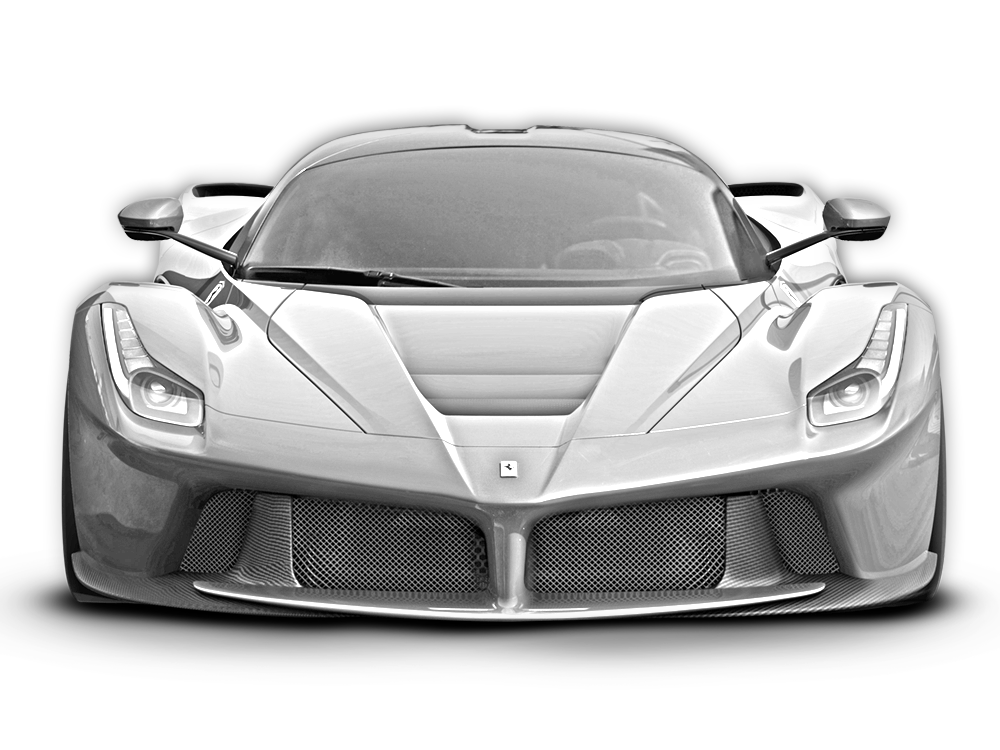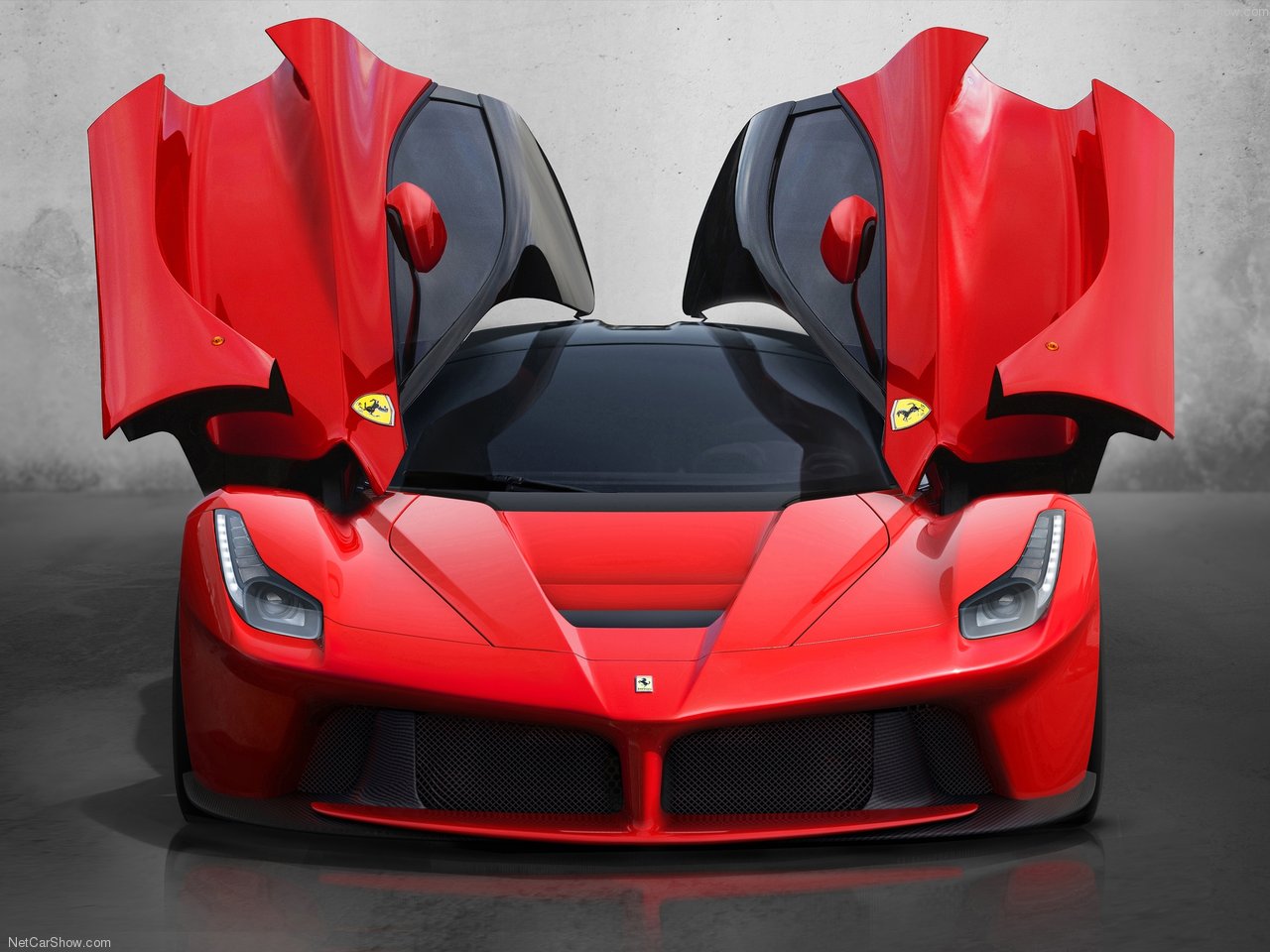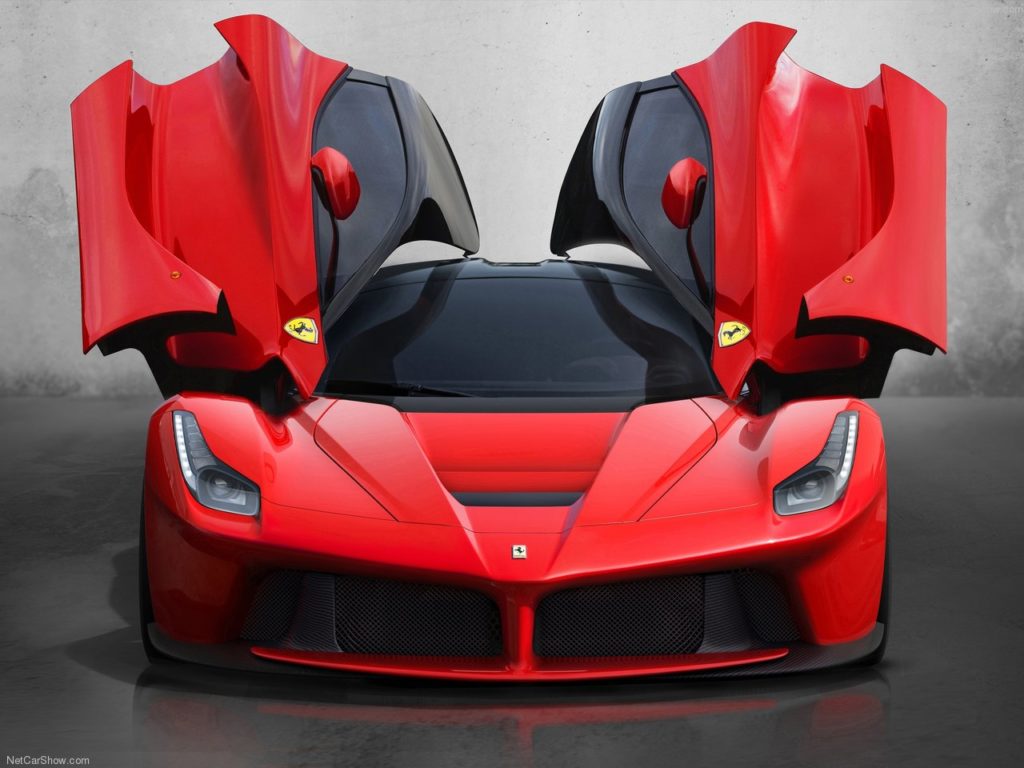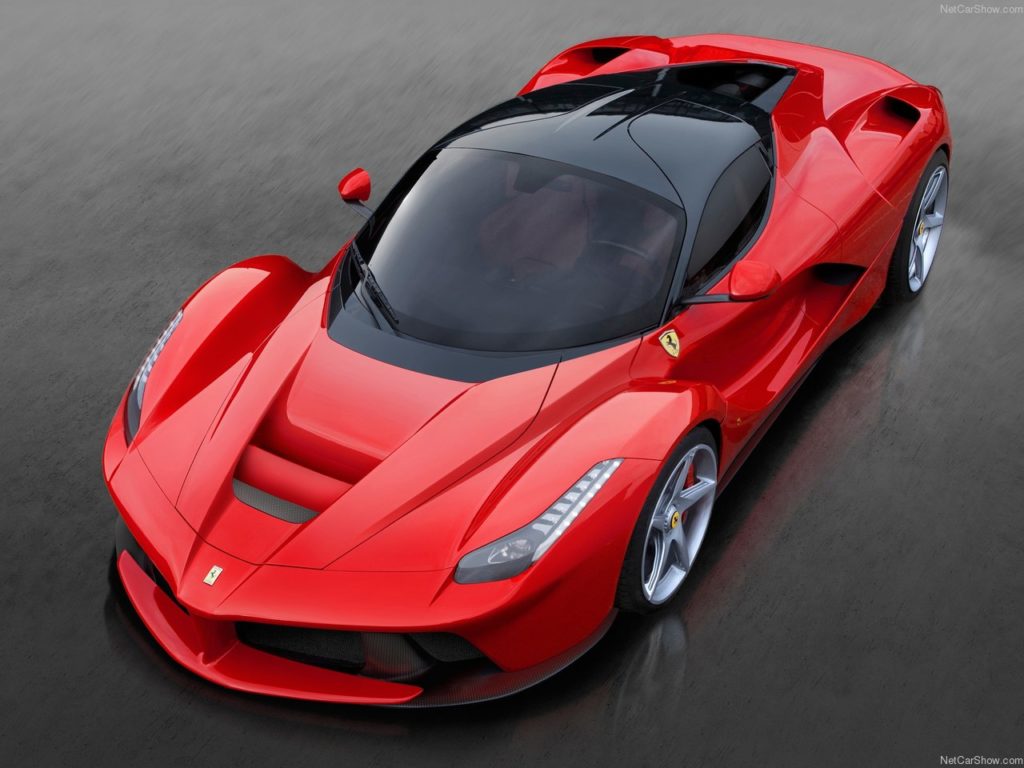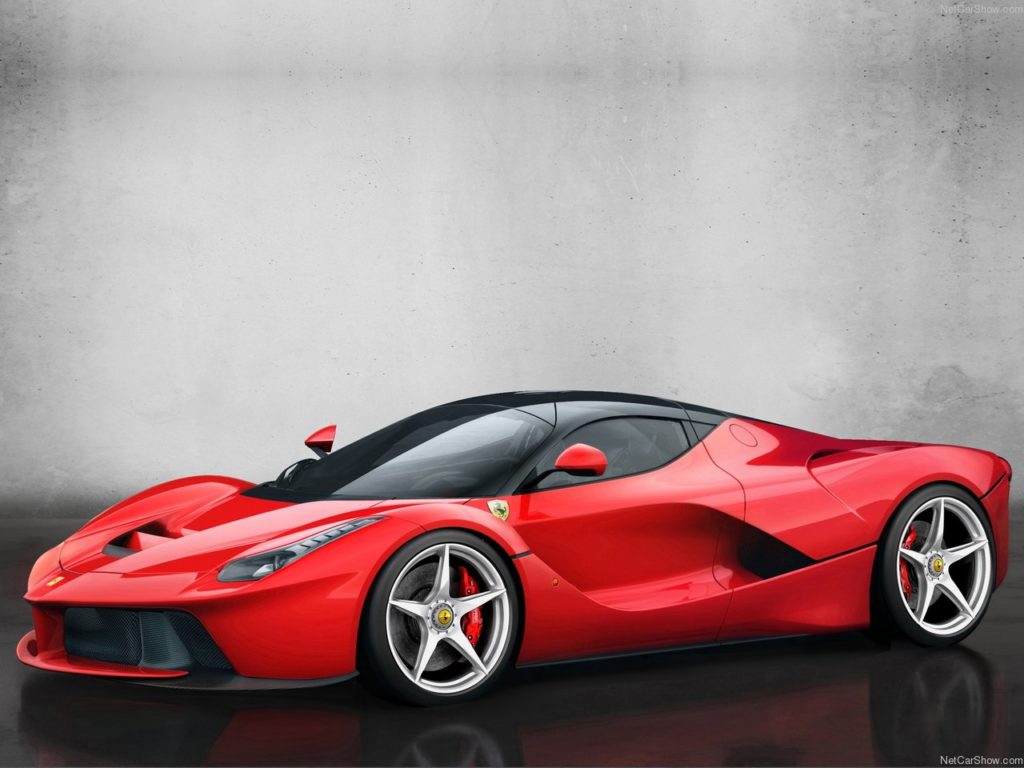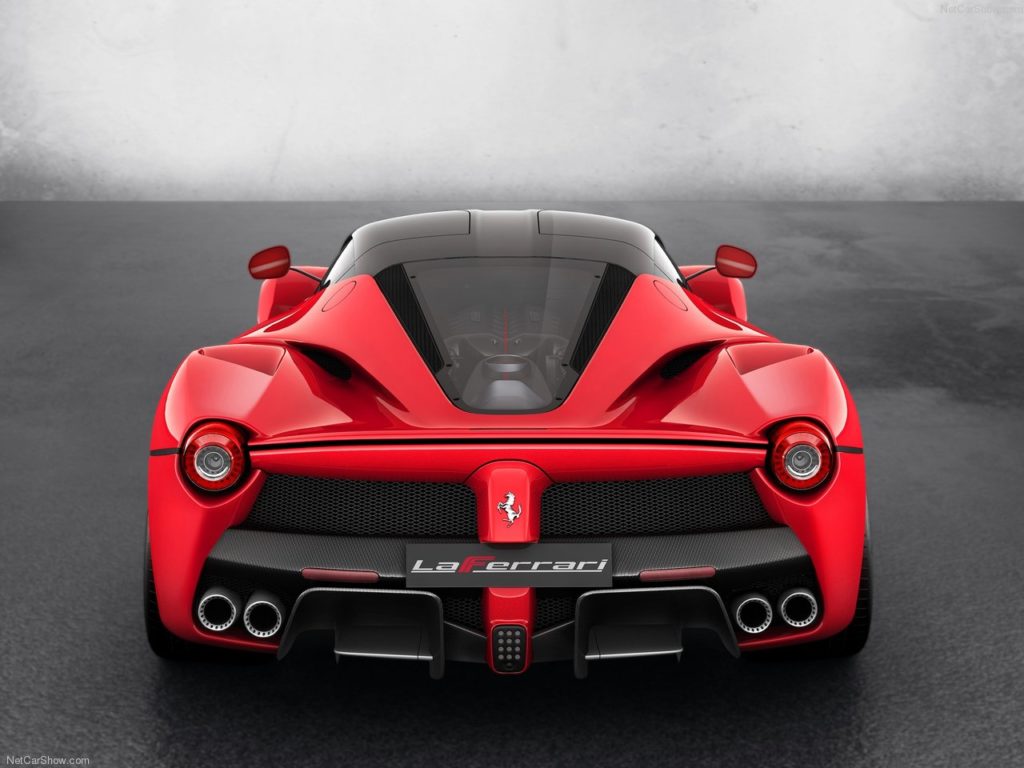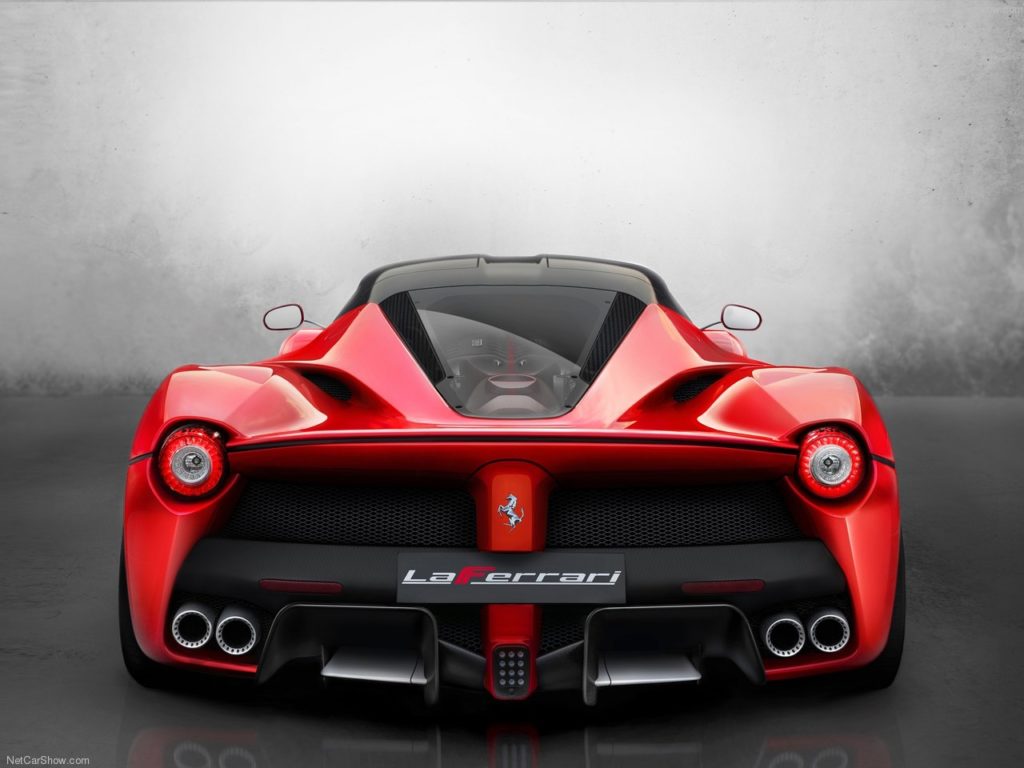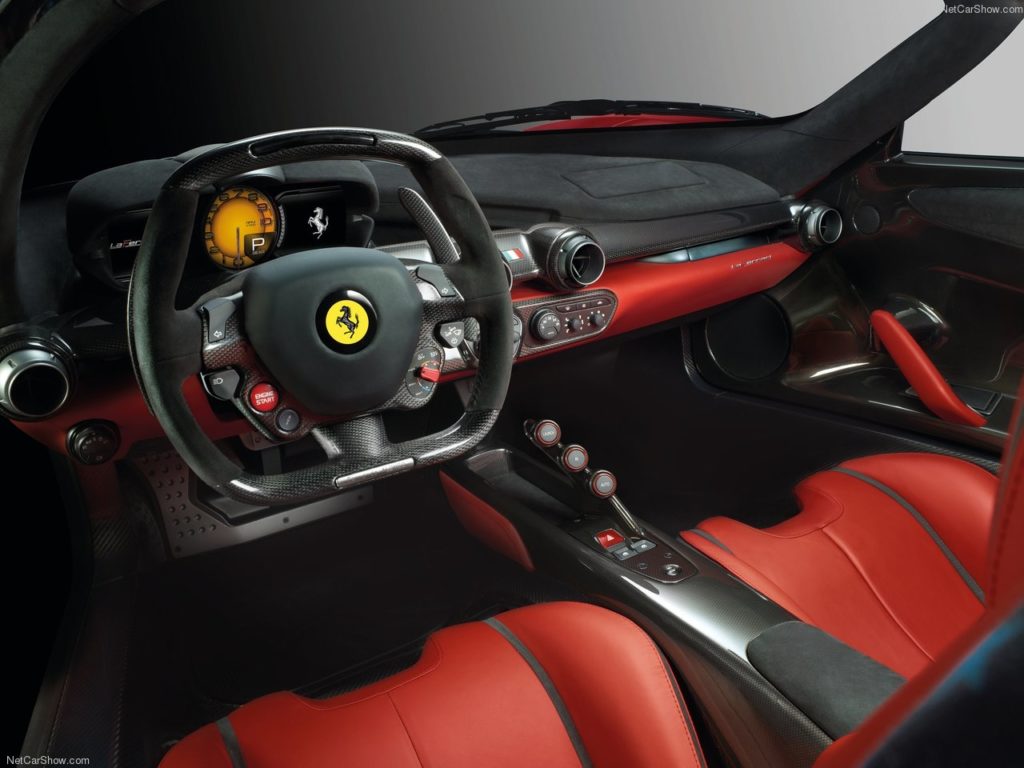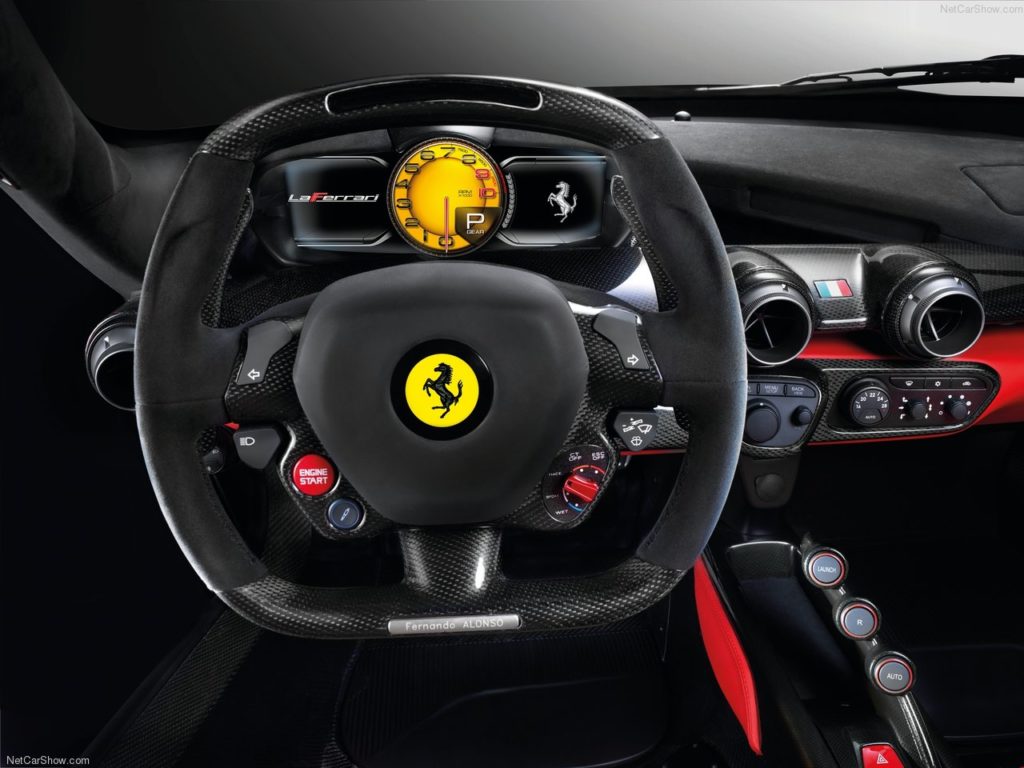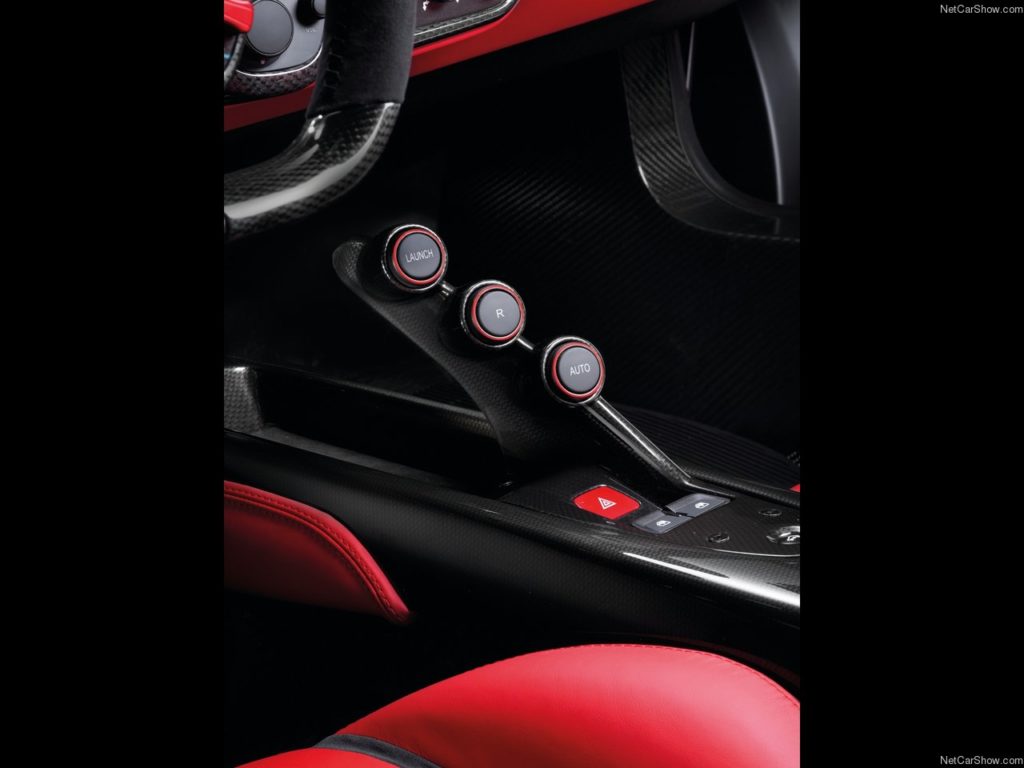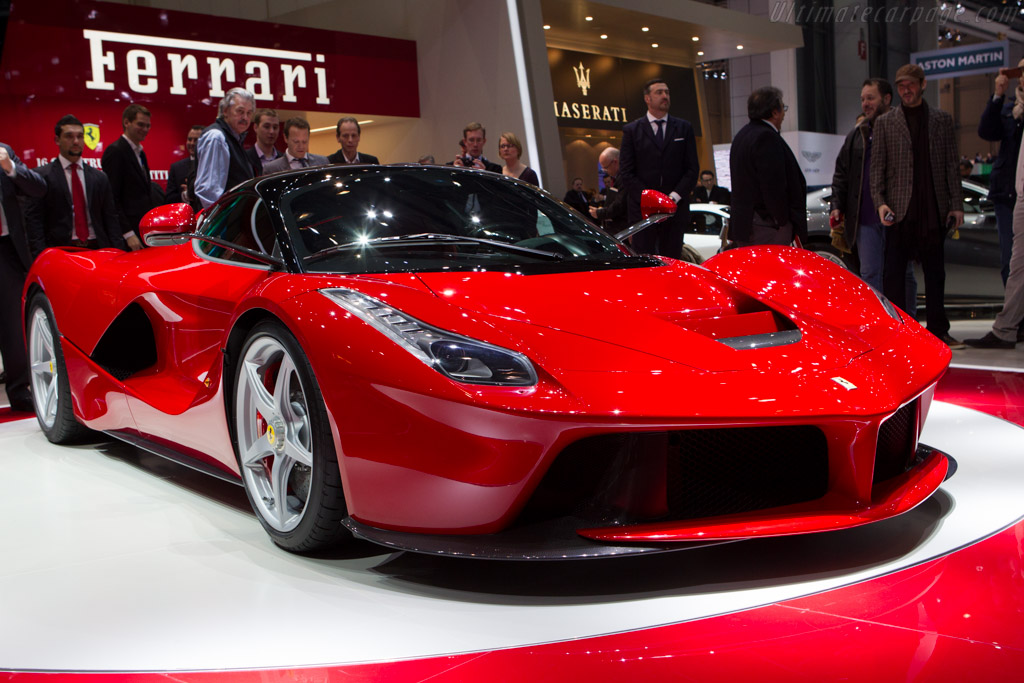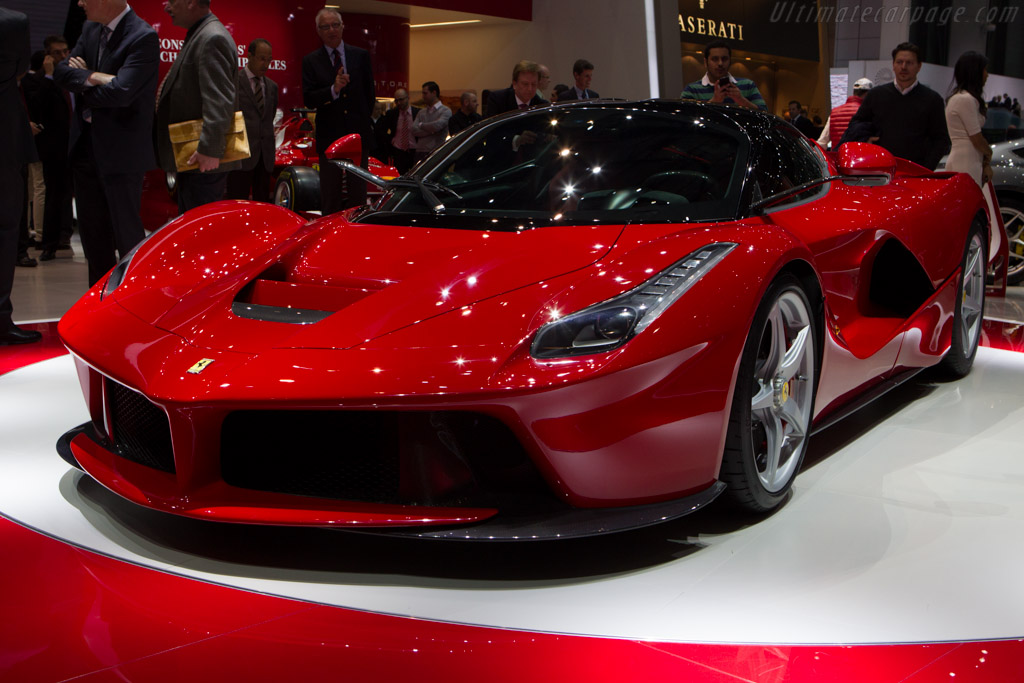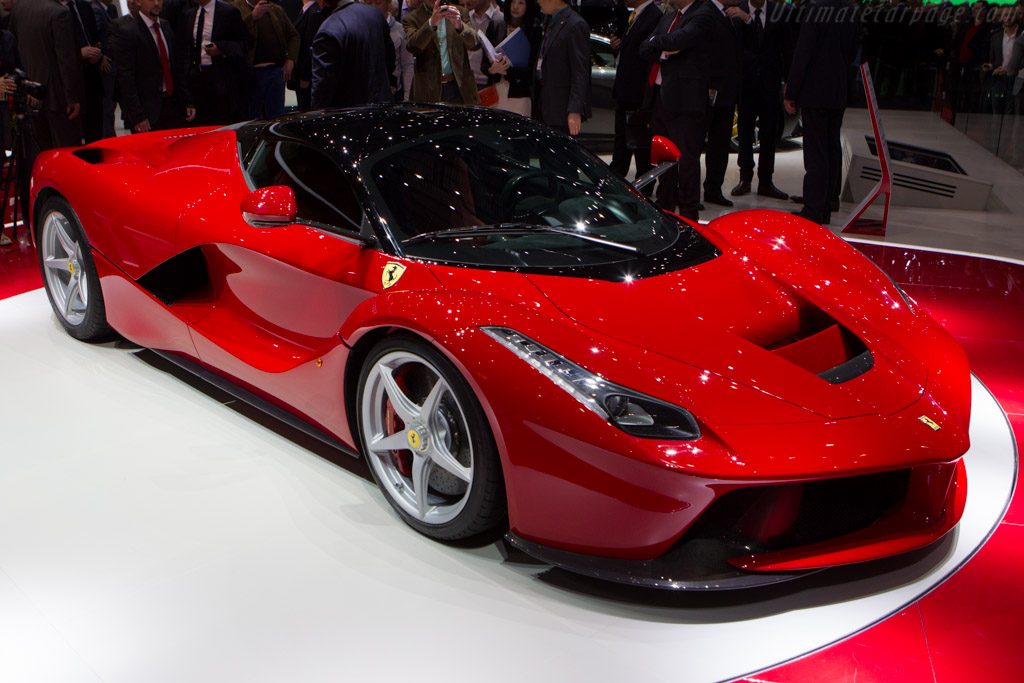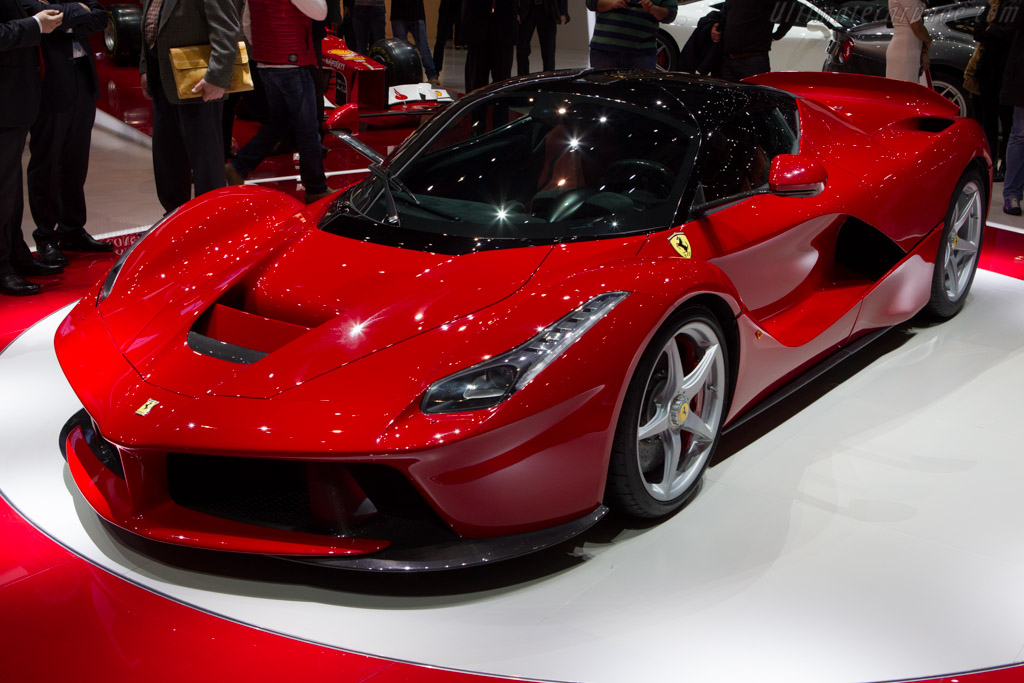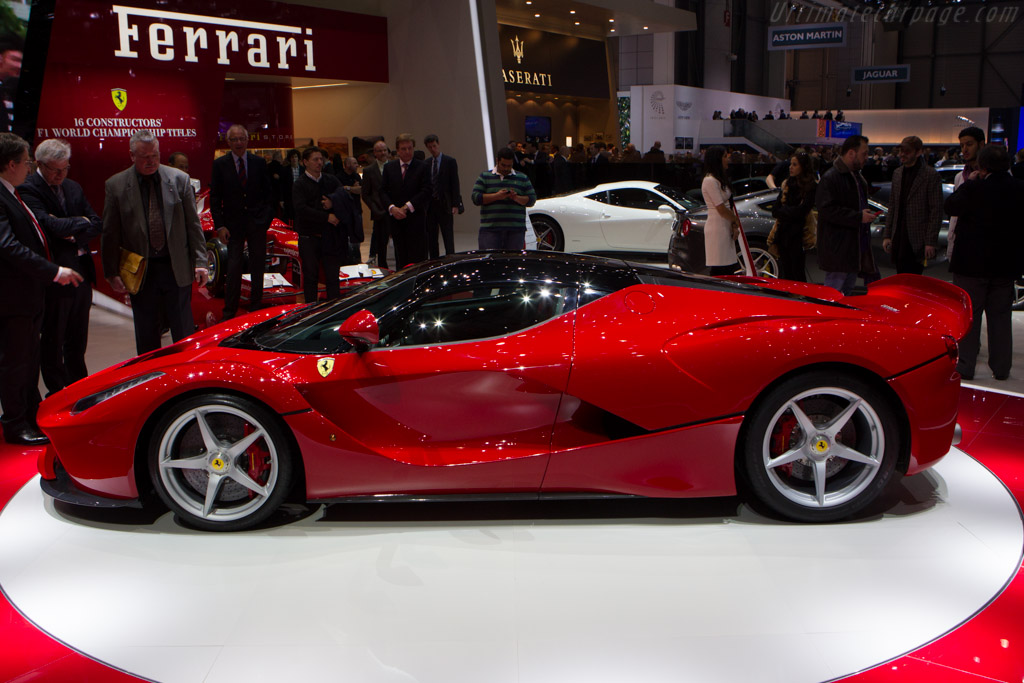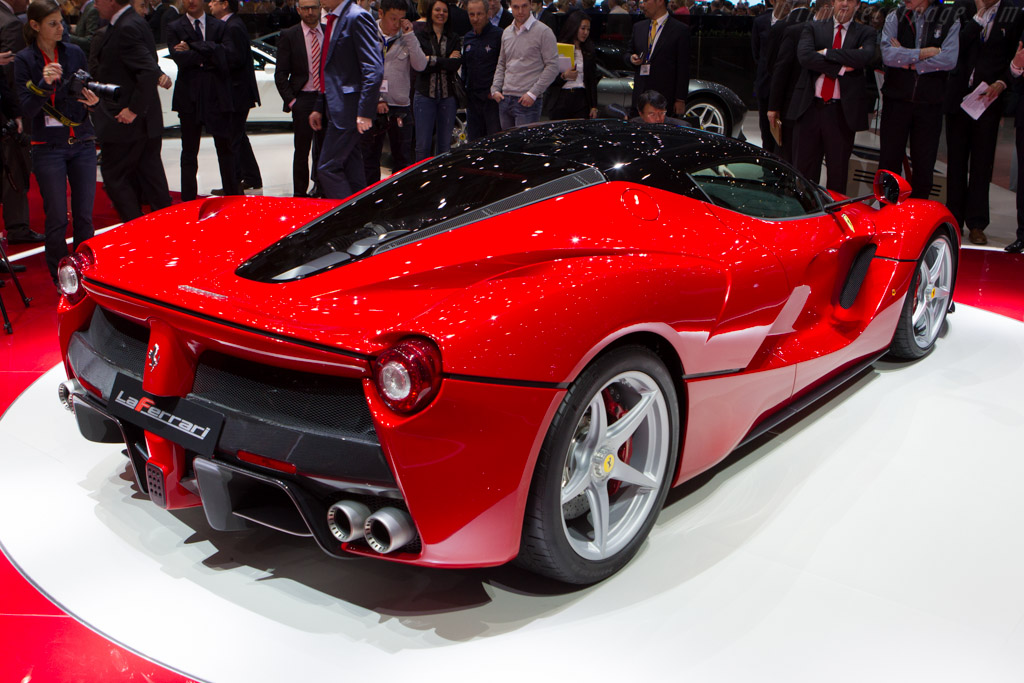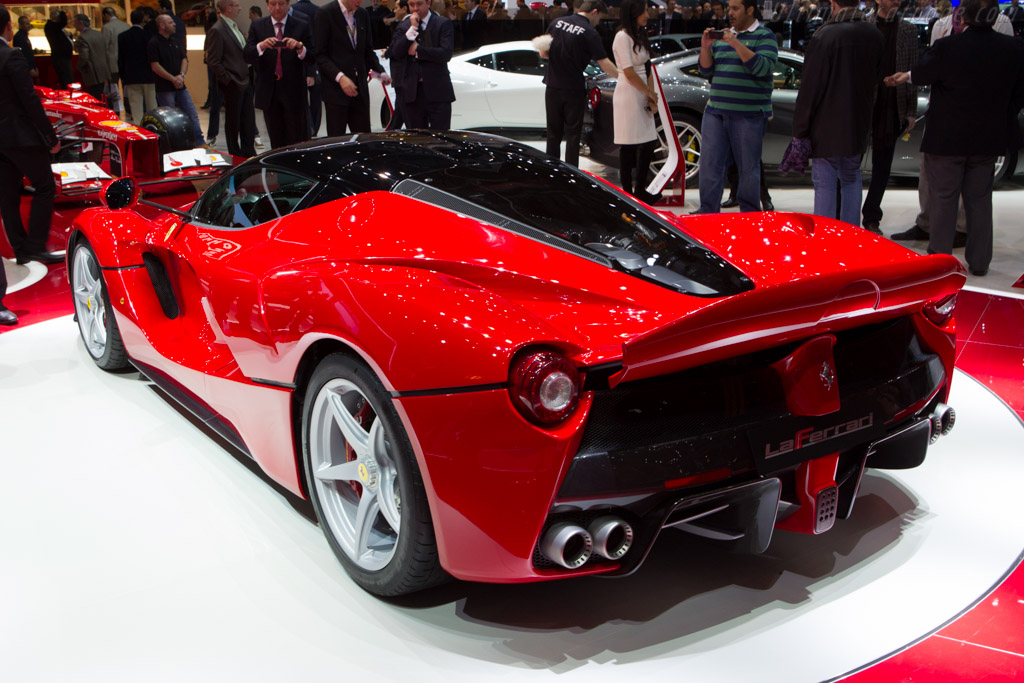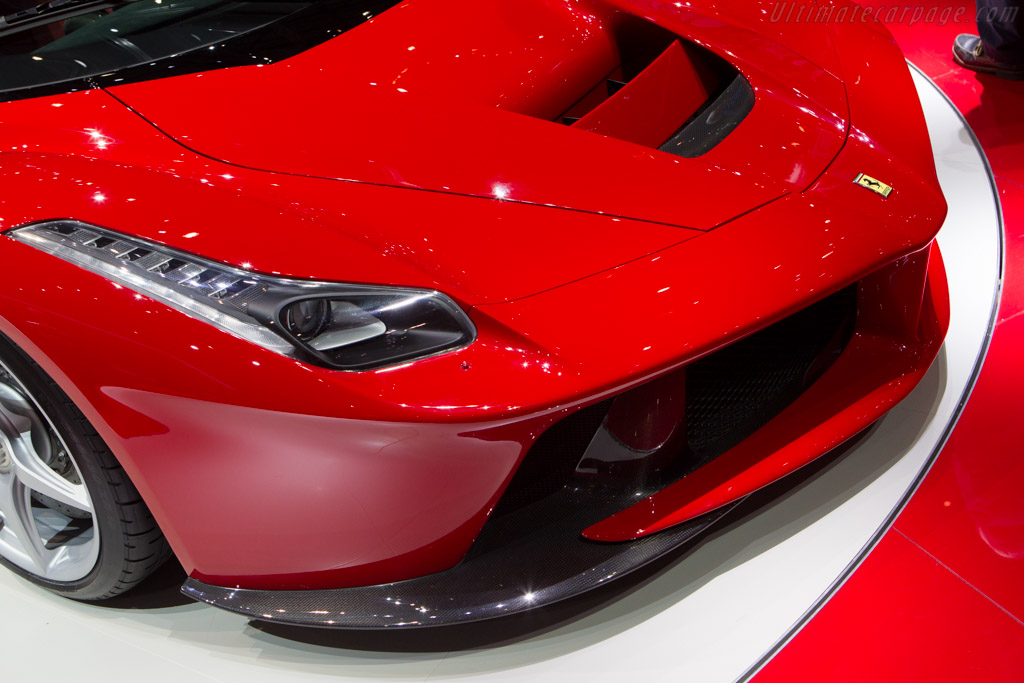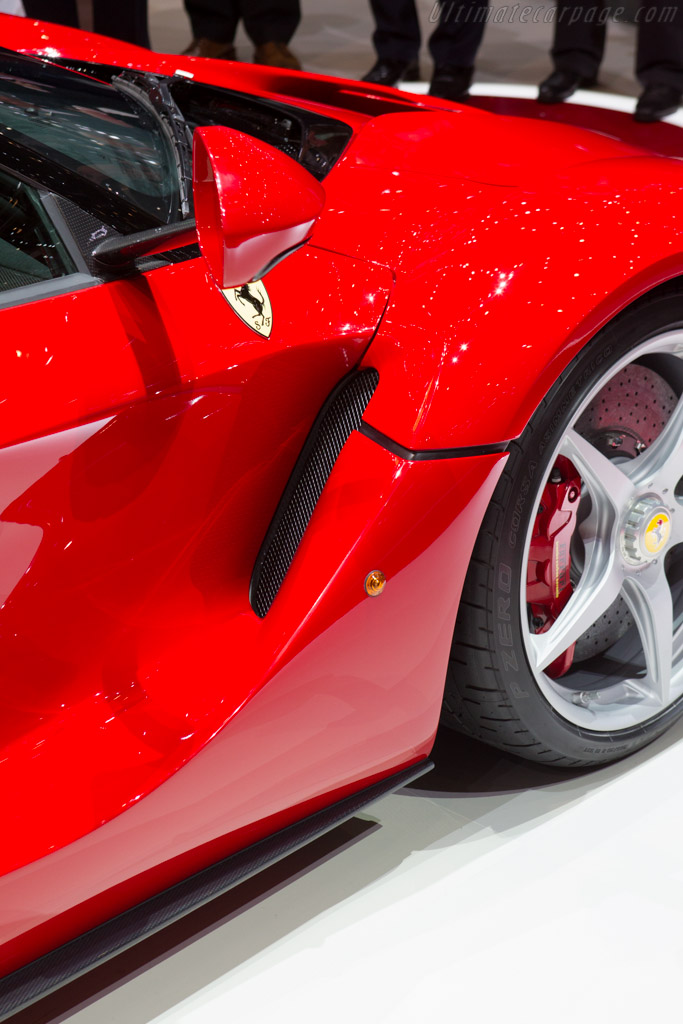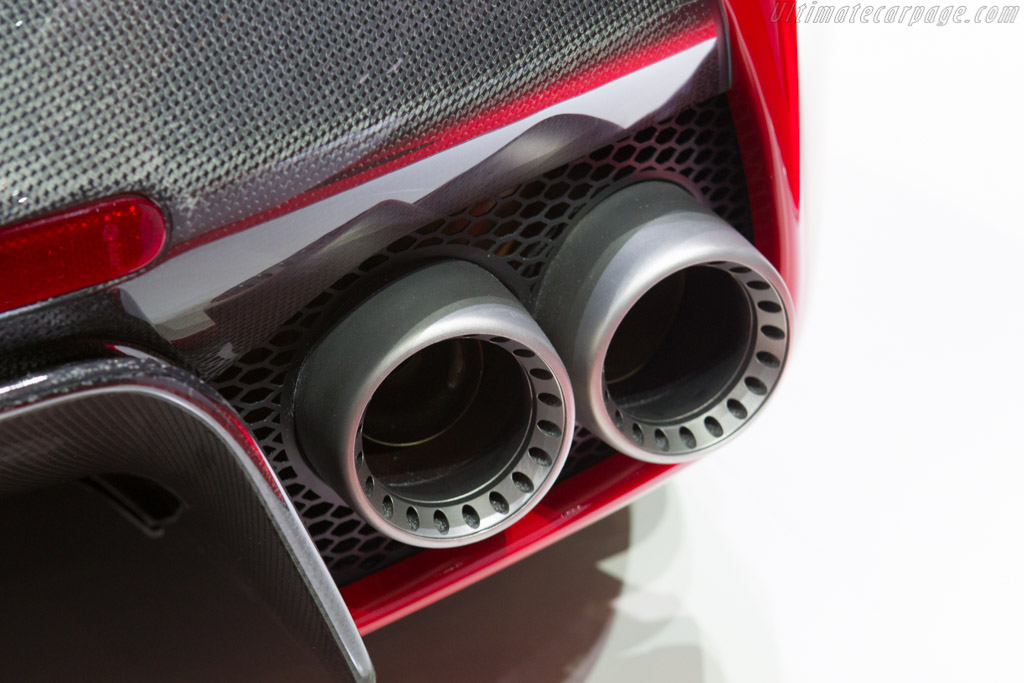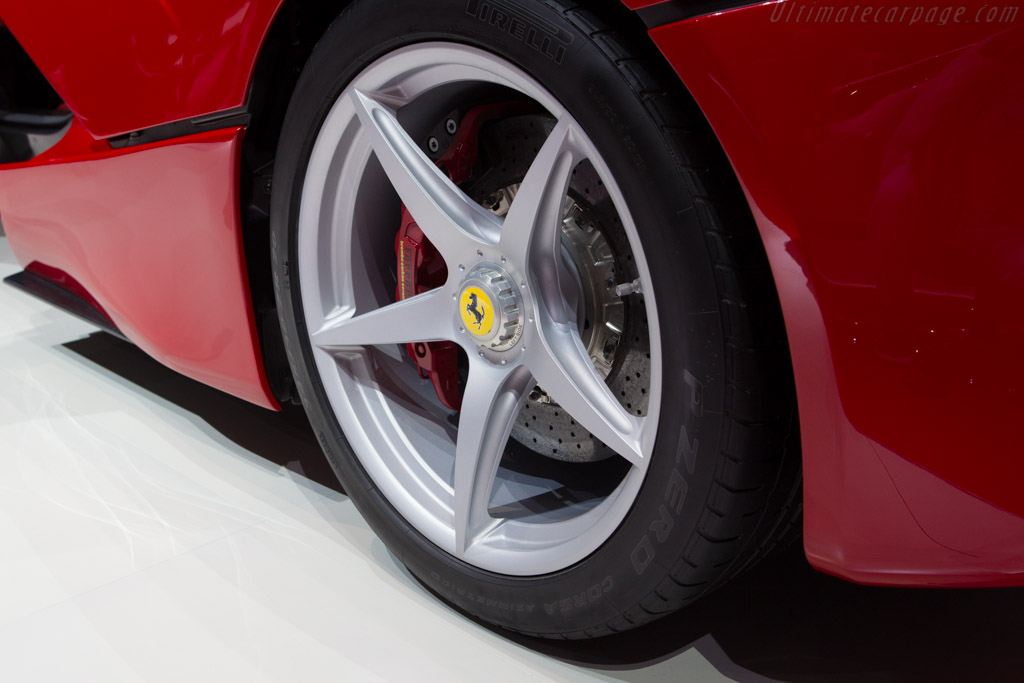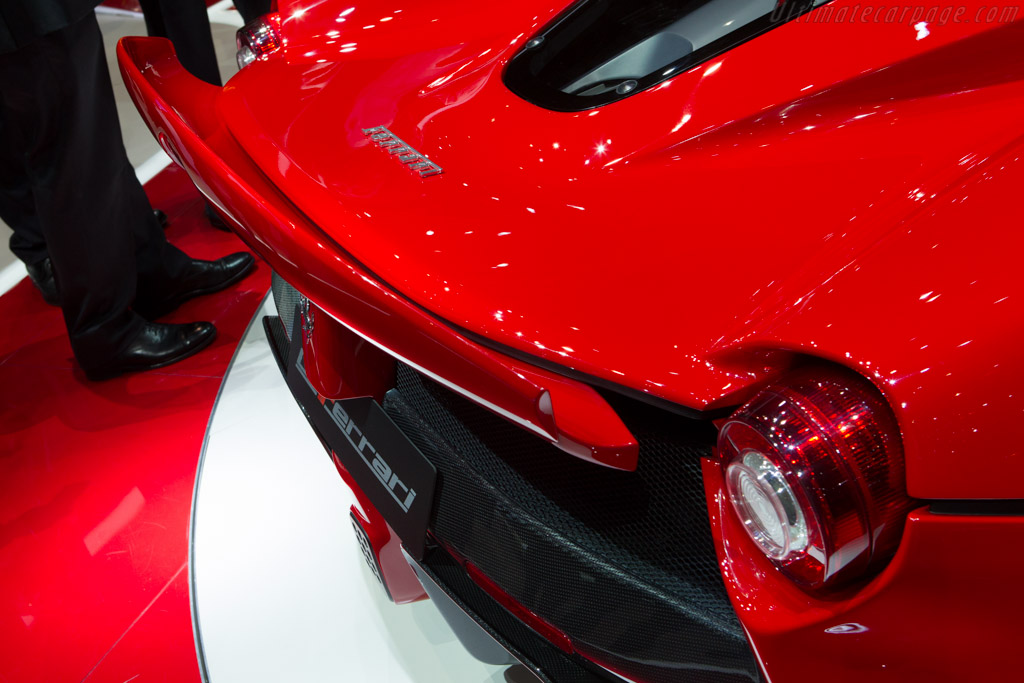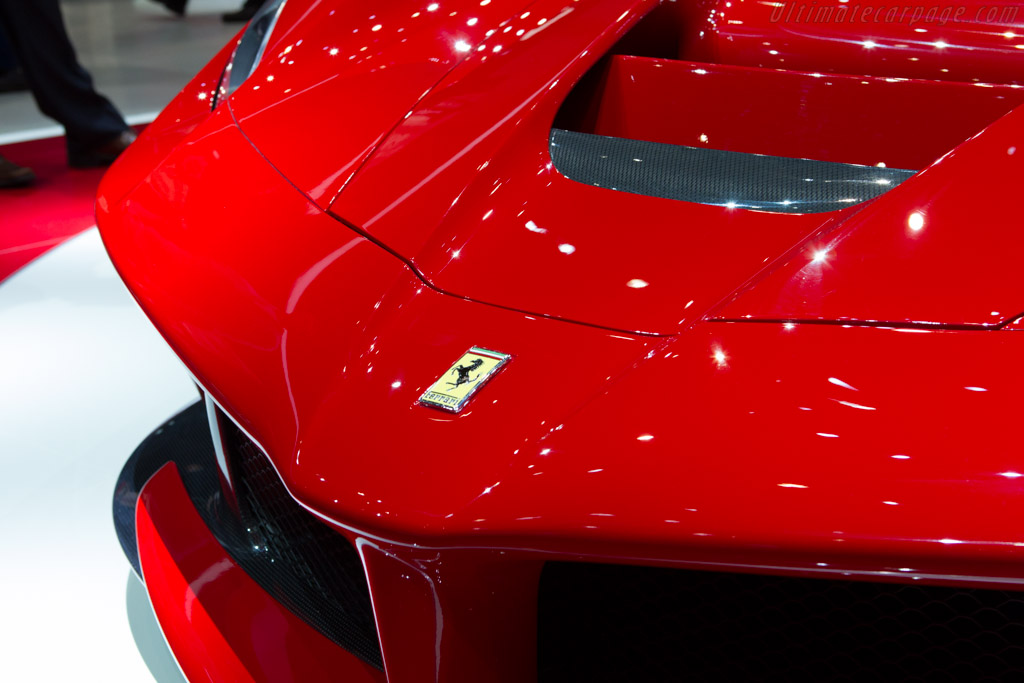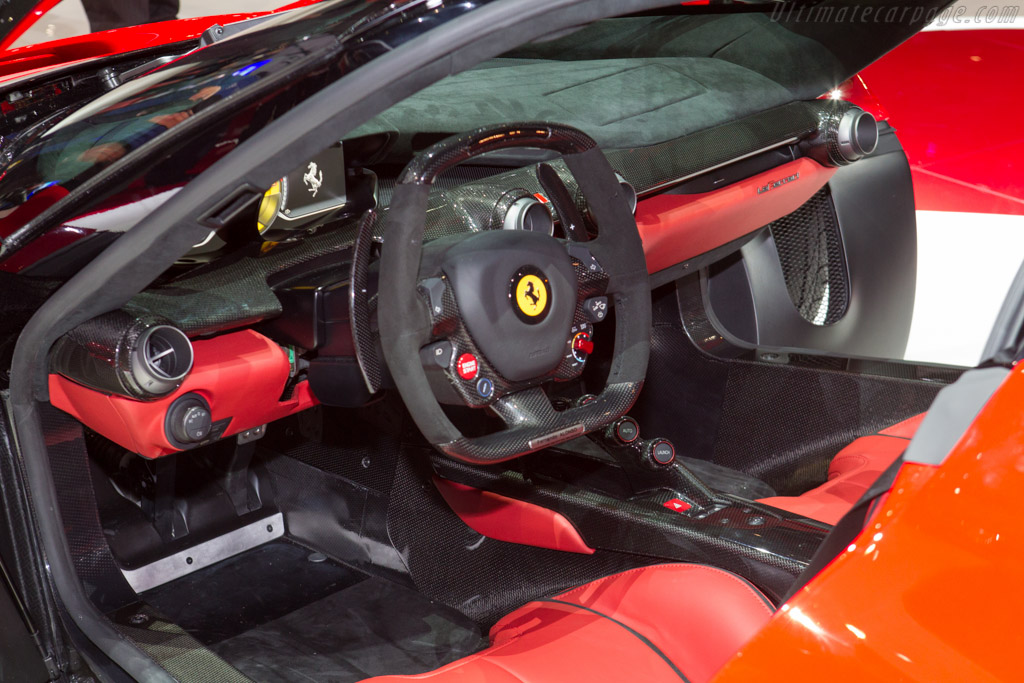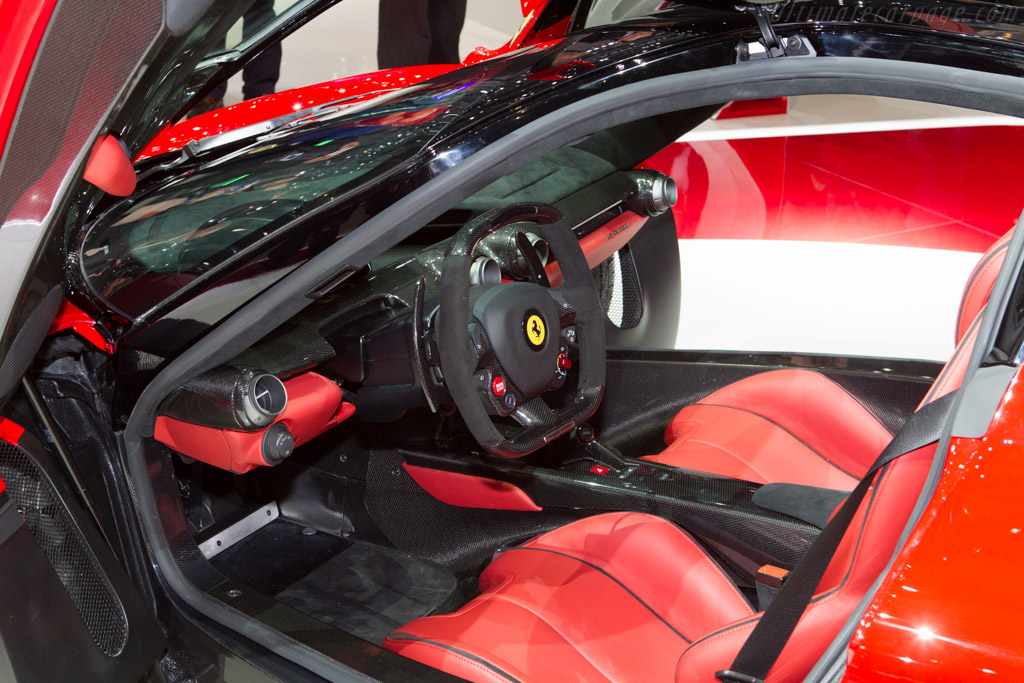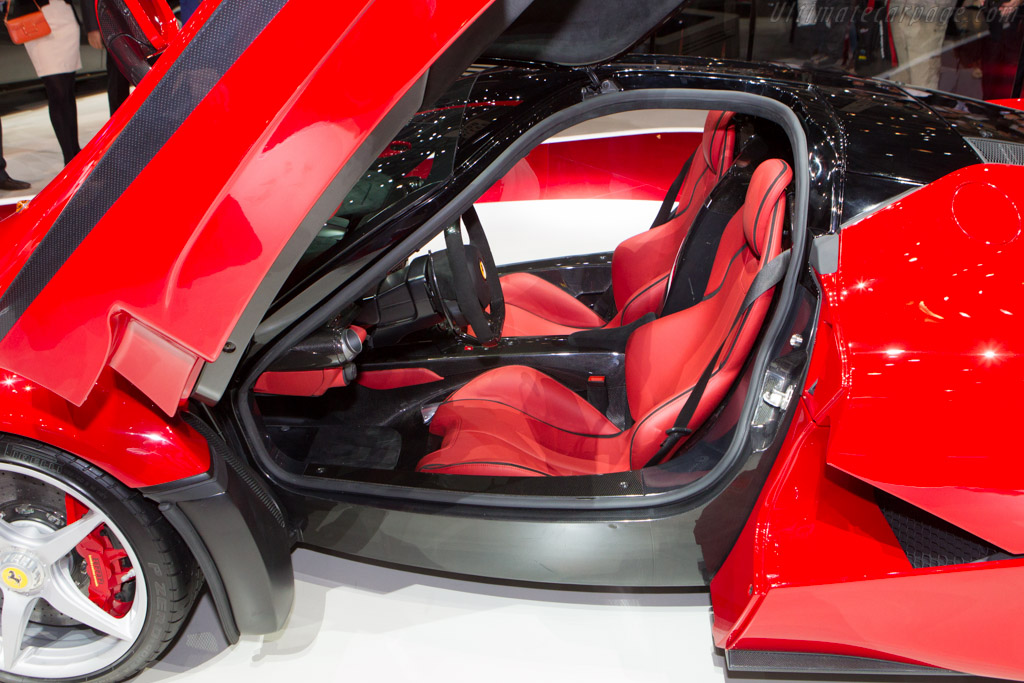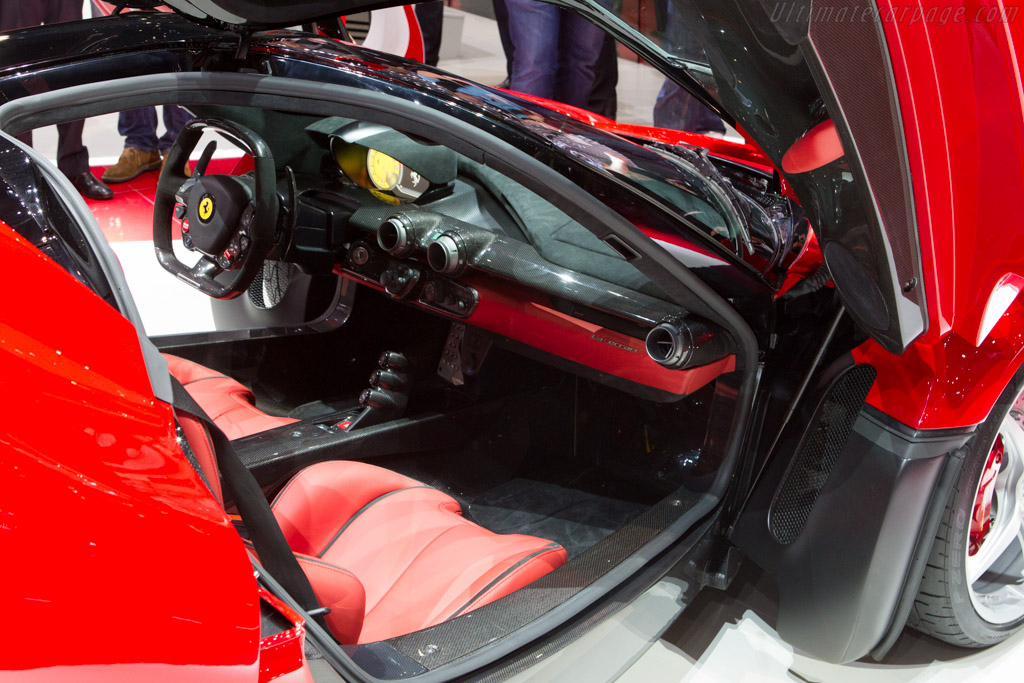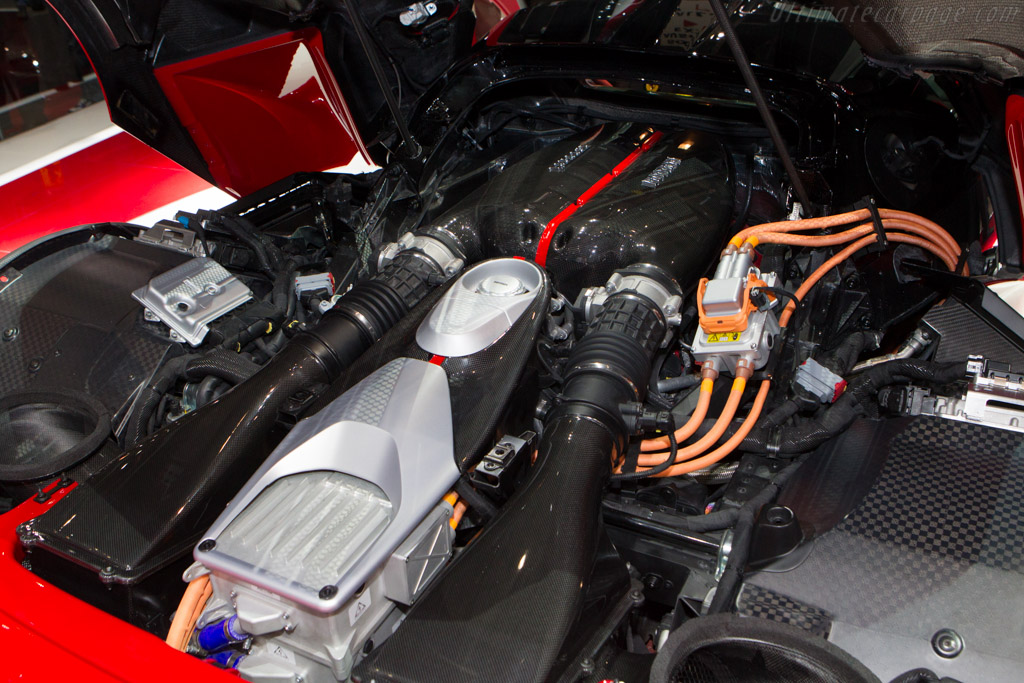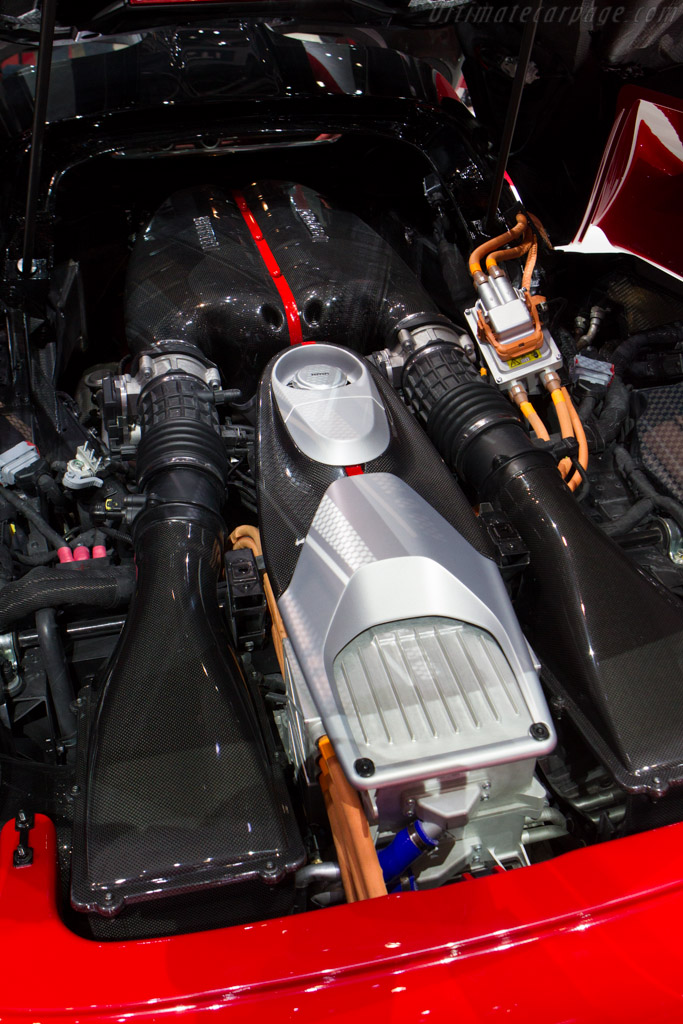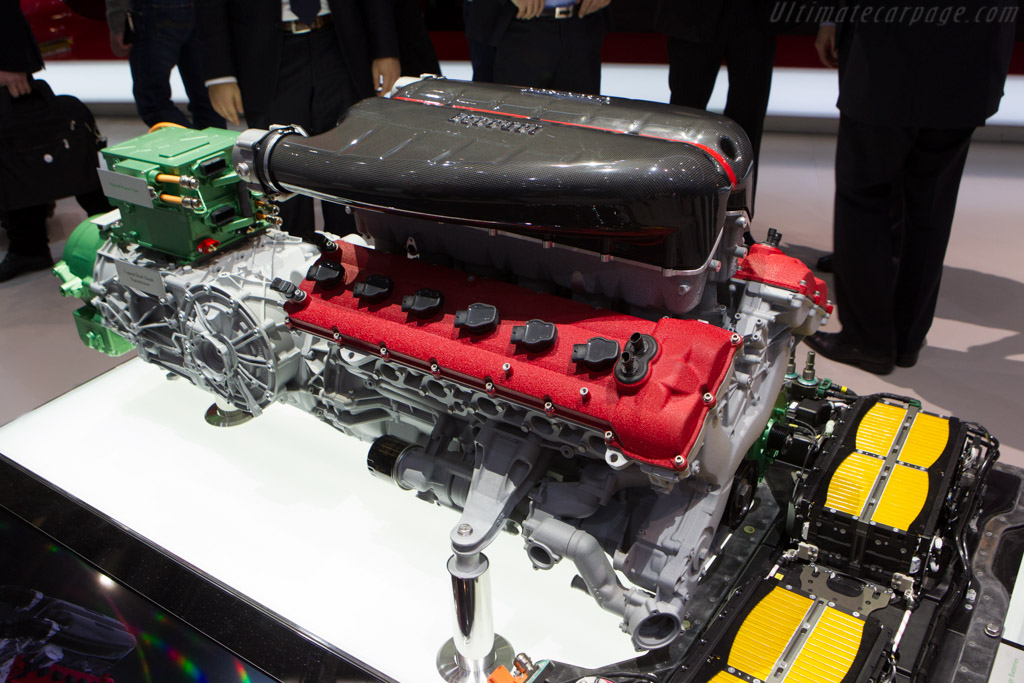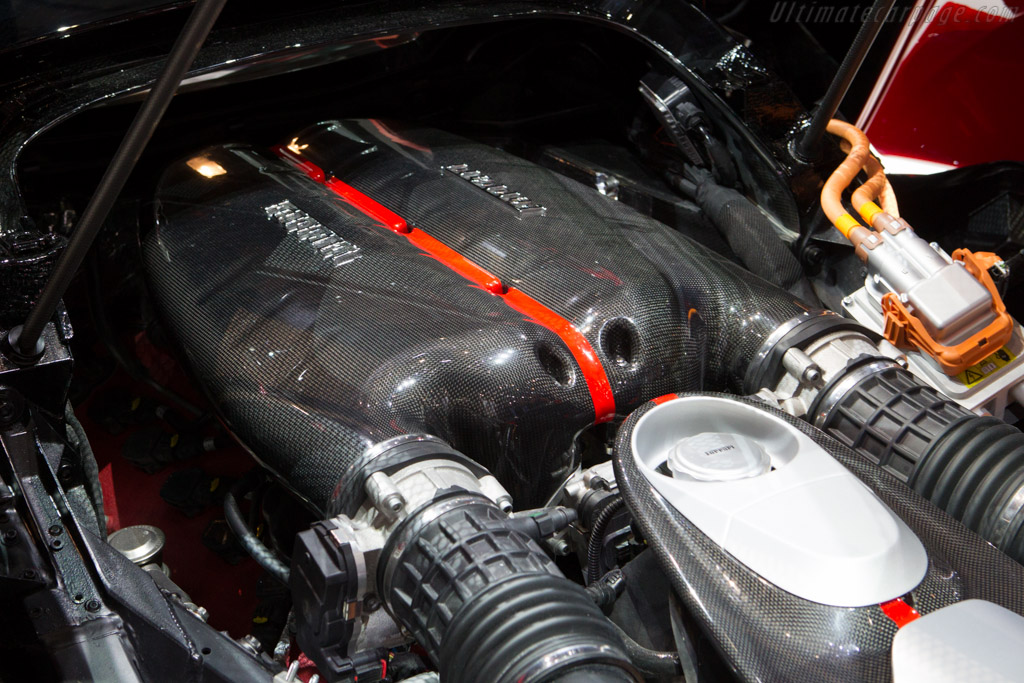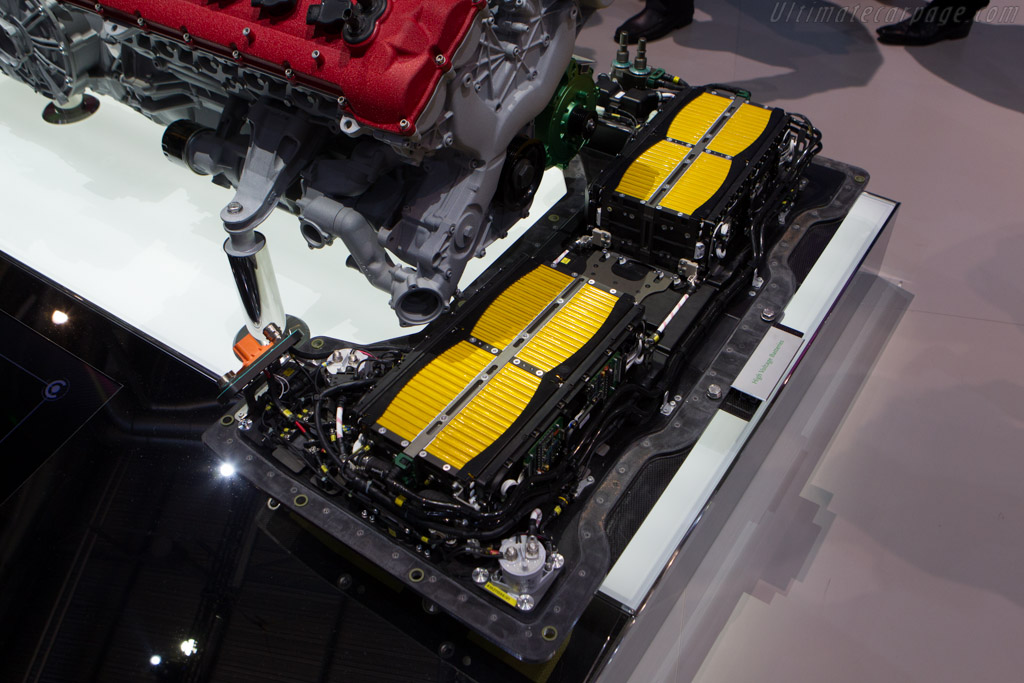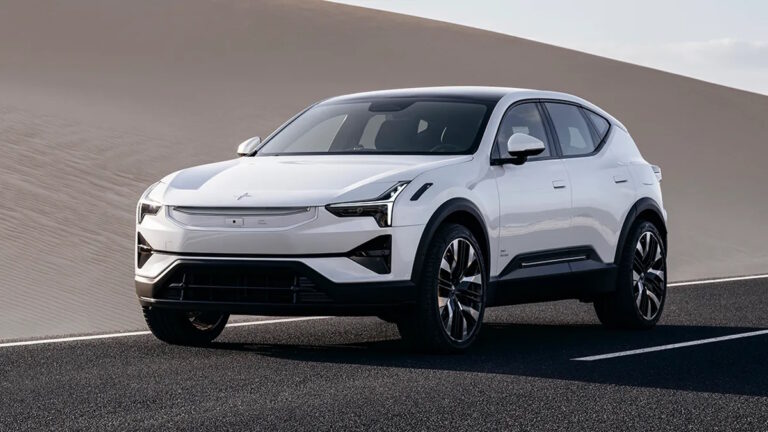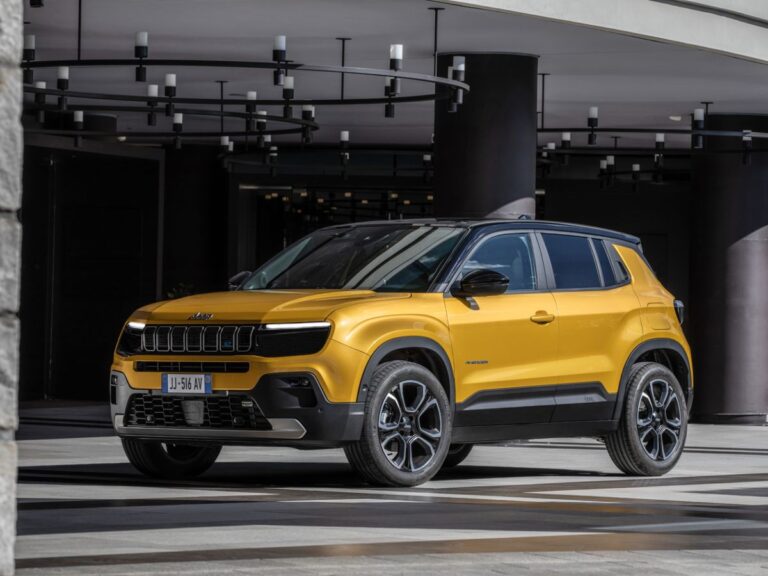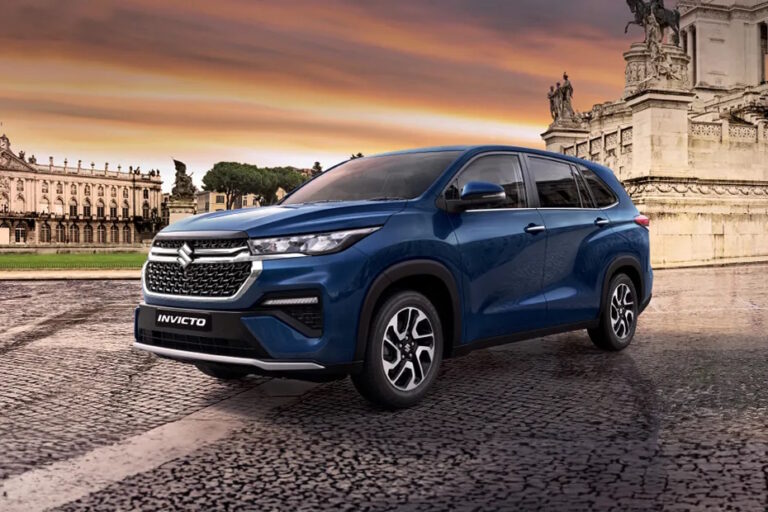Views: 1
Information
“La Ferrari” redirects here. For other uses, see Ferrari (disambiguation).
LaFerrari, project name F150 is a limited production hybrid sports car built by Italian automotive manufacturer Ferrari.[5] LaFerrari means “The Ferrari” in Italian and some other Romance languages, in the sense that it is the “definitive” Ferrari.
As of 2020, the LaFerrari is the last Ferrari with a mid-mounted 12-cylinder engine.
Design development
Nine conceptual design studies were considered for the V12 hybrid flagship in 2011, reduced to five in April 2011 (three by Ferrari Centro Stile and two by Pininfarina). Of these, two full-size concepts were built: LaFerrari Concept Manta (internal designation: 2011 Model 2) and LaFerrari Concept Tensostruttura (internal designation 2011 Model 3). These were unveiled at the Ferrari Museum in Maranello, Italy and Ferrari World in Abu Dhabi. The final design of the LaFerrari is similar to the Manta concept (Model 2).
The Ferrari Centro Stile cars designed after the LaFerrari have design elements reminiscent of the Tensostruttura concept (Model 3) e.g. the SF90 Stradale.
Variants
LaFerrari (2013–2016)
LaFerrari is based on findings from testing of the FXX development prototype[5] and on research being conducted by the Millechili Project at the University of Modena. Association with the Millechili Project led to speculation during development that the car would weigh under 1,000 kg (2,205 lb),[8] but a dry weight of around 1,255 kg (2,767 lb) was claimed.[9] Only 499 units were produced, and each cost more than 1 million Euros. The car was unveiled at the 2013 Geneva Auto Show, followed by Auto Shanghai 2013, 2013 Tour Auto Optic 2000, 2013 Supercar Chronicle, Italian Chamber of Commerce in Japan.
LaFerrari Aperta (2016–2018)
LaFerrari Aperta is the open-top version of LaFerrari. Initially, 200 cars were sold with an additional nine reserved for use during the Ferrari 70th Anniversary celebrations. One more unit was later sold by auction. The Aperta comes with a removable carbon-fibre hardtop and a removable canvas soft top. Other changes include more efficient powertrain’s control electronics, re-angled radiators to direct airflow out along the underbody rather than over the bonnet, a longer front air dam to help increase downforce, an L-shaped flap on the upper corner of each windscreen pillar to reduce compression on the rear of the cabin in the absence of a roof, different door opening angles with different wheel arches and a new carbon-fibre insert allowing the doors to rotate. The car was unveiled at the 2016 Paris Motor Show. Like past open-top Ferrari models, it uses the Aperta label to denote its removable roof. According to Ferrari, all units were already pre-sold to customers via invitation.
Specifications
LaFerrari is the first mild hybrid produced by the Italian automotive marque, providing the highest power output of any Ferrari road car whilst decreasing fuel consumption by 40 percent. LaFerrari’s internal combustion petrol powerplant is a longitudinally rear mid-mounted Ferrari F140 direct fuel injected 65° V12 engine with a displacement of 6,262 cc (6.3 L) generating a maximum power output of 800 PS (588 kW; 789 hp) at 9,000 rpm and 700 N⋅m (516 lb⋅ft) of torque at 6,750 rpm, supplemented by a 163 PS (120 kW; 161 hp) KERS unit (called HY-KERS), which provides short bursts of extra power. The KERS system adds extra power to the combustion engine’s power output level for a total of 963 PS (708 kW; 950 hp) and a combined torque of 900 N⋅m (664 lb⋅ft). Ferrari claims CO2 emissions of 330 g/km. The engine’s bore X stroke is 94 mm × 75.2 mm (3.70 in × 2.96 in) with a compression ratio of 13.5:1 and a specific power output of 94 kW (128 PS) per litre. It is mated to a 7-speed dual-clutch transmission.
Equipment
The 5-spoke alloy wheels of LaFerrari, showing the carbon-ceramic braking system
The car is equipped with carbon-ceramic Brembo brake discs at the front (398 mm) and rear (380 mm), The car is equipped with Pirelli P Zero Corsa tyres measuring 265/30 R 19 (front) and 345/30 R 20 (rear) respectively. The car uses a carbon fibre monocoque structure designed by Ferrari’s F1 technical director Rory Byrne, with a claimed 27 percent more torsional rigidity and 22 percent more beam stiffness than its predecessor. It has a double wishbone suspension in the front and a multi-link suspension in the rear. LaFerrari has several electronic controls including an electronic stability control, high-performance ABS/EBD (anti-lock braking system/electronic brake distribution), EF1-Trac F1 electronic traction control integrated with the hybrid system, E-Diff 3 third-generation electronic differential, SCM-E Frs magnetorheological damping with twin solenoids (Al-Ni tube), and active aerodynamics, which are controlled by 21 of LaFerrari’s onboard computers, to enable maximum performance.[2] The body computer system is developed by Magneti Marelli Automotive Lighting.
Performance
Ferrari states that the car has a top speed of 350 km/h (220 mph), similar to the Enzo’s top speed. 0–100 km/h (0–62 mph) in under 3 seconds, 0–200 km/h (0–124 mph) in under 7 seconds, and 0–300 km/h (0–186 mph) in 15 seconds were announced by Ferrari. Ferrari also claims that the car has lapped its Fiorano Test Circuit in 1:19.70.
Design
The design of the V12 flagship received no input from Pininfarina, making it the first Ferrari since the Bertone-styled 1973 Dino 308 GT4 not to have Pininfarina bodywork or another styling. This decision is a rare exception to the collaboration between Ferrari and Pininfarina that began in 1951. However, Ferrari has stated that there are no plans to end business relations with Pininfarina. The cockpit stands out for its essentiality and the sportiness of the shapes, intended to convey the high level of performance of the car. The steering wheel has integrated controls and paddle-shifters directly fixed to the steering column, a solution that allows better use in all conditions. The “bridge” which exists between the two seats, designed like a suspended wing, is home to other instruments linked to the dual-clutch gearbox. The instrumentation consists of a 12.3-inch (310 mm) TFT display with the option to choose between two layouts and can host data from the telemetry system.
Recall
LaFerrari coupés were offered a replacement fuel tank due to the possible incorrect adhesion of a layer of paint on the fuel tank leading to a possible fire. 85 LaFerrari coupés between 2014 and 2015 model years were recalled due to headrests from Lear’s L32 seat failing to absorb the required amount of energy, and the tyre-pressure monitoring system displaying the wrong message when a tyre suffered a puncture.
Auction history
The production of the 500th LaFerrari coupé was announced on 31 August 2016. The vehicle was to be sold at auction to benefit the people of central Italy affected by the August 2016 Central Italy earthquake on 24 August 2016. Ultimately, it was put up for auction on 3 December 2016, by RM Sotheby’s at the Ferrari Finali Mondiali weekend at Daytona International Speedway. All proceeds went to the National Italian American Foundation’s Earthquake Relief Fund. Sales proceeds amounted to US$7.5 million. On 3 December 2016, a LaFerrari was auctioned off for US$7 million (GB£5,743,500.00) making this car “the most valuable 21st century automobile ever sold at auction” according to the automotive press.[39] In 2017, the last unit of LaFerrari Aperta was auctioned for US$10 million.
Marketing
Hublot Manufacture produced 60 MP-05 “LaFerrari” hand-wound tourbillon wristwatches inspired by LaFerrari coupé. The watch has 50 days of power reserve due to the usage of 11 barrels. The more barrels it has, the more it can lengthen the power reserve, but the barrels are usually used to increase precision.
